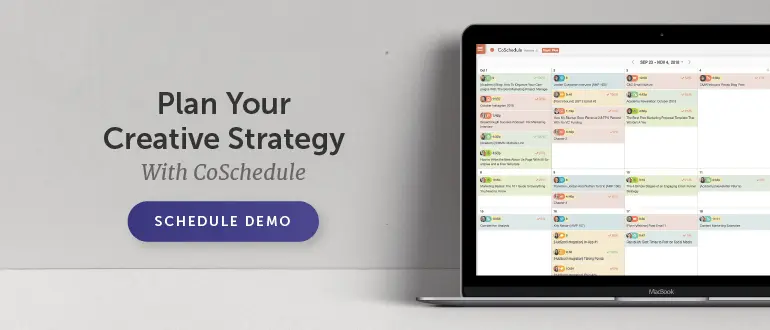Everything You Need To Know About Your Creative Strategy
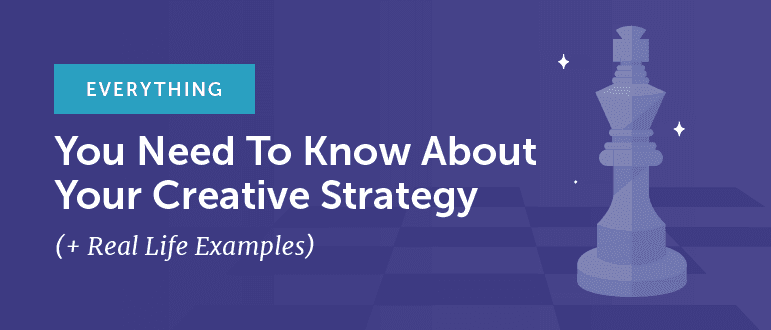 As marketers, we constantly feel the pressure from our stakeholders, bosses, maybe even managers, to be creative.
Not too creative to the point that your idea will get shut down, but creative enough that you are different (and better) than your competition. It sometimes can feel like they are asking you to mix oil and water.
Ya feel me?
Oh and don’t forget, your creative strategy has to work. To the point that you are confident in what you’re doing, you can prove the ROI, and figure out how to plan and execute the entire strategy.
Take a deep breath because after reading this, instead of feeling like this…
As marketers, we constantly feel the pressure from our stakeholders, bosses, maybe even managers, to be creative.
Not too creative to the point that your idea will get shut down, but creative enough that you are different (and better) than your competition. It sometimes can feel like they are asking you to mix oil and water.
Ya feel me?
Oh and don’t forget, your creative strategy has to work. To the point that you are confident in what you’re doing, you can prove the ROI, and figure out how to plan and execute the entire strategy.
Take a deep breath because after reading this, instead of feeling like this…
 You’ll feel like this.
You’ll feel like this.
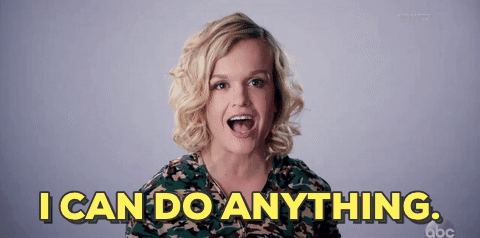 In this post you’ll learn everything you need to know about creative strategies, from how-to-write one, to successful, real-life examples that you can implement in your own workplace. Let’s get started!
In this post you’ll learn everything you need to know about creative strategies, from how-to-write one, to successful, real-life examples that you can implement in your own workplace. Let’s get started!
The Importance of a Creative Strategy
You know creative strategies are important, probably because you were asked to make one, but you might not understand why they are important. Creative strategies assist the company in reaching marketing goals, prove their ROI, and support business growth through a strategic and well-executed approach. Basically, your creative strategy is what, how, and why, you’re going to reach your marketing goals and business objectives. Without one, you risk losing sight of your projects, going over budget, and ticking off your stakeholders. ?
Without one, you risk losing sight of your projects, going over budget, and ticking off your stakeholders. ?
How To Write The Best #Creative Strategy with @CoSchedule.
Click To TweetHow to Write the Best Creative Strategy
Writing an entire creative strategy can be pretty intimidating, but don’t worry. I’ve broken it down step-by-step so it seems a little less daunting (hopefully).1. Marketing Goals
Before you come up with your creative strategy, you need to know what you’re trying to achieve by setting a marketing goal. Don’t worry about the how, that comes later... You’ll want your marketing goal to be S.M.A.R.T.? S.M.A.R.T. stands for specific, measurable, aspirational, realistic, and time-bound. Here’s an example of a S.M.A.R.T. goal: “I want to increase my conversion rate by 2% during Q4 2019.”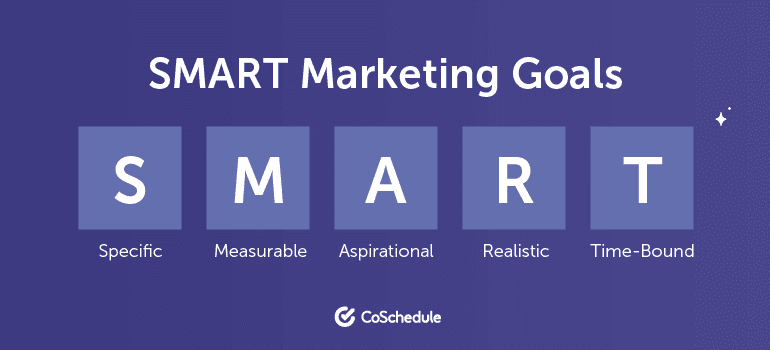
2. Marketing Key Performance Indicators
It’s important that you know which metrics to measure when assessing your goal. In reality, you can’t prioritize every metric, because that would mean that all of your metrics have the same importance (and they shouldn’t be). KPIs are metrics that indicate progress towards a particular goal. Some examples of KPIs that you may be measuring are:- Leads generated.
- Conversions.
- Revenue.
- Email list subscribers.
- Pageviews.
3. Target Audience
Define the ideal person that you want to buy your product or service. The better you know your target audience, the better you can market to them. Understand their needs and wants helps you get inside their minds to create a creative strategy that connects to them. Now you’re probably thinking, how can I apply what I know about my target audience to my creative strategy? Well… Here’s a quick example. Let’s say your target audience are purchasers at hospitals and medical centers. To reach them, blasting out a commercial on TV showing your product line of highly niche medical equipment probably won’t help you reach your goal… But, if you write content that can help your target audience solve real-life problems… well, you get the point. There’s your creative strategy. It’s one and it’s based on attracting your target audience through content that helps them solve their problems.4. Benefit
This step is as simple as it sounds. Answer this: What benefit(s) does my target audience get from my product or service? If you don’t know the direct benefits, there’s no way your audience will understand the benefits. Make sense? Ask yourself these three things to make sure that you are hitting the nail on the head: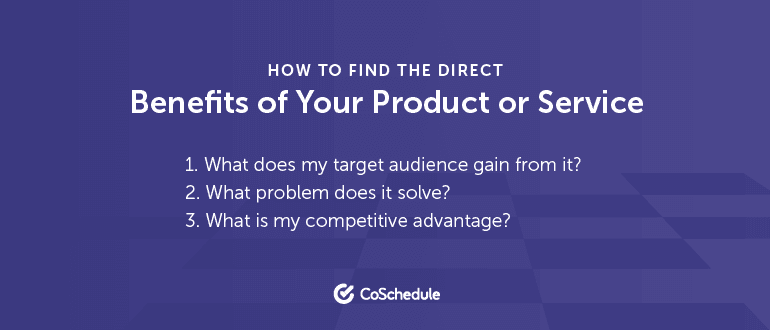 How to Find the Direct Benefits of Your Product or Service
How to Find the Direct Benefits of Your Product or Service
- What does my target audience gain from it?
- What problem does it solve?
- What is my competitive advantage?
- What does my target audience gain from my product or service?
- What problem does my product solve?
- What is my competitive advantage?
5. Support
All the benefits you just listed are awesome, but they aren’t going to believe you unless they are backed up with some facts. Support your benefits so that people actually believe you. There are a number of different ways you can support your benefit in your creative strategy. Customer testimonials are a great way to show that real people have used your product or service and prove it works! To get customer testimonials, you can directly ask customers or even use reviews that you get.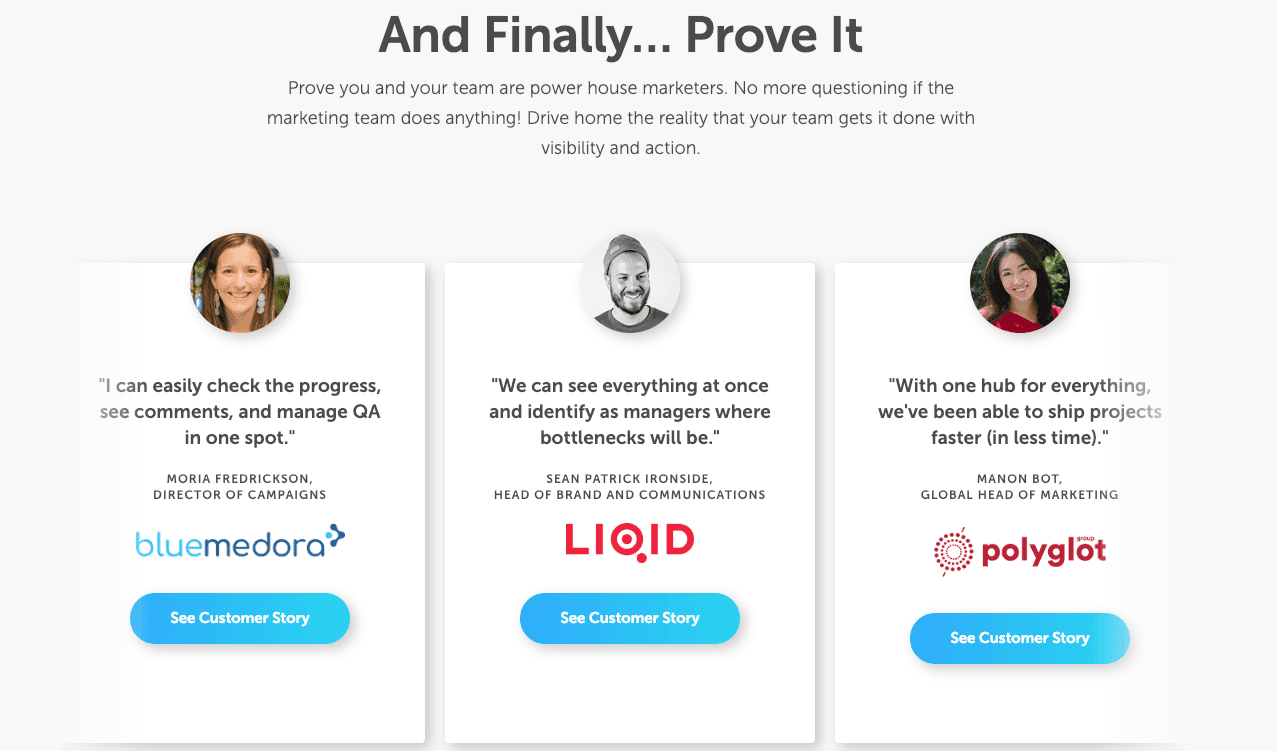 Statistics are a quick and easy way to prove yourself. It can be as simple as stating “95% of customers said they would never go back to their old laundry detergent.”
The stat deems you credible and persuades your audience to believe you.
Using facts in a creative strategy is very similar to adding a statistic. You see facts in creative strategies all of the time.
“Recommended number one whitening toothpaste among dentists.” It’s a fact and it makes people trust the product.
Lastly, demonstrating how your product works can back up your benefits. Just make sure it actually works. ?
We’ve all seen those OxiClean commercials… Must I say anymore?
Statistics are a quick and easy way to prove yourself. It can be as simple as stating “95% of customers said they would never go back to their old laundry detergent.”
The stat deems you credible and persuades your audience to believe you.
Using facts in a creative strategy is very similar to adding a statistic. You see facts in creative strategies all of the time.
“Recommended number one whitening toothpaste among dentists.” It’s a fact and it makes people trust the product.
Lastly, demonstrating how your product works can back up your benefits. Just make sure it actually works. ?
We’ve all seen those OxiClean commercials… Must I say anymore?
6. Positioning
Brand positioning strategy is a large project in itself. When you consider positioning in your creative strategy, make sure it aligns with your brand. The worst thing is when companies aren’t true to themselves.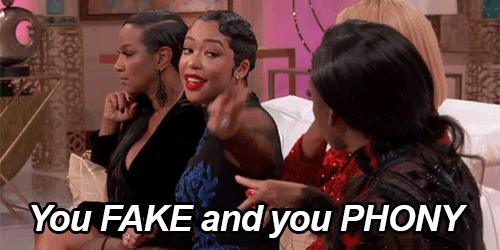
7. Deliverables
The deliverables of your project are going to be any tangible or intangible actions or tasks that direct the promotion of your product or service. Your deliverables are going to be based solely on the type of creative strategy that you are implementing. For example, a creative content strategy is going to look a lot different than a creative social media strategy. To prepare deliverables for your creative strategy, ask yourself:- Who needs to be involved in this project?
- What tactics need to be implemented to reach our goal?
- What does the timeline look like to complete this project?
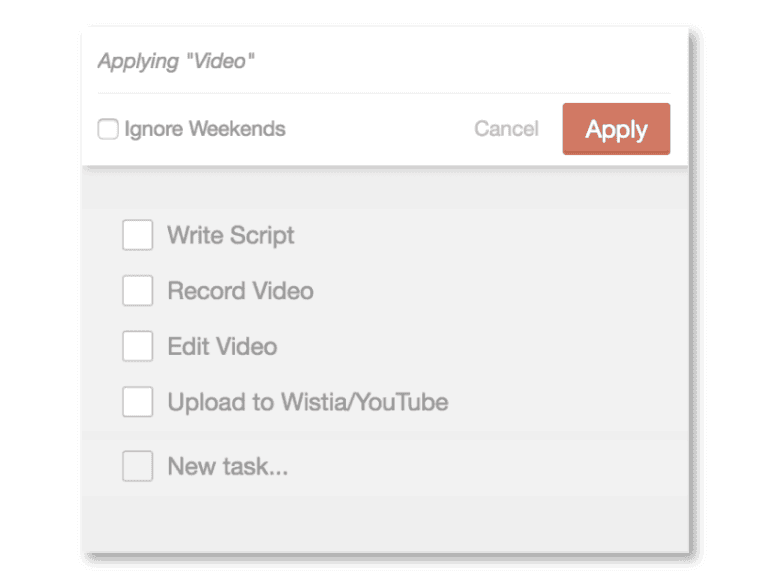 Next you’ll want to add the due dates of your project. Maybe you want to give it two months, or two weeks, either way you’ll be able to schedule the appropriate days in the task template. All you have to do is select the number of days before publish that each task should get done.
Next you’ll want to add the due dates of your project. Maybe you want to give it two months, or two weeks, either way you’ll be able to schedule the appropriate days in the task template. All you have to do is select the number of days before publish that each task should get done.
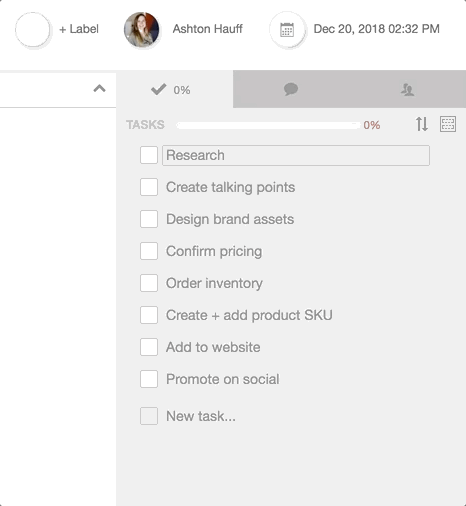 Finally, assign the tasks and set approvals to make sure everyone knows what their role is within the project.
Finally, assign the tasks and set approvals to make sure everyone knows what their role is within the project.
 CoSchedule’s task template will save you a ton of time on implementing your creative strategies throughout the entire year.
Now to the fun part, budgeting. ?
CoSchedule’s task template will save you a ton of time on implementing your creative strategies throughout the entire year.
Now to the fun part, budgeting. ?
8. Budget
One thing that ticks off stakeholders more than a bad creative strategy is when that creative strategy goes over budget. But don’t worry, here’s all you need to know so that you don’t go over budget to fulfill your tactics!Steps to Keep Your Creative Strategy on Budget
- Choose your deliverables
- Accurately estimate how much each deliverable is going to cost
- Keep track of where your money is going at all times
- Drop strategies that aren’t performing well
9. Executional Guidelines
When being creative and doing this “out of the box,” sometimes we can forget about certain guidelines that our companies have. This step won’t apply to every marketing team. Most likely, if you are part of a larger corporation you will need to include it. This step ensures that your strategy follows any necessary guidelines so that your stakeholders don’t have to hand it right back to you. Pat yourself on the back because you officially know how to write a creative strategy. ? You’re probably thinking okay great, I know how to write one, but that doesn’t help me think of creative concepts. Well, you’re in luck. If you want to see some successful IRL examples of creative strategies, keep on scrollin’.Types of Creative Strategies with Real Life Examples
Getting asked to be creative is worse than the dawn of the blinking cursor.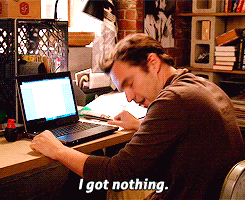 But good news, you wouldn’t be asked to come up with a creative strategy if you weren’t capable of it.
So hold your head up high and go into this with an “I can do it” attitude. ?
It would take days to cover every type of creative strategy, so this blog post will cover the most prevalent topics with some killer examples.
But good news, you wouldn’t be asked to come up with a creative strategy if you weren’t capable of it.
So hold your head up high and go into this with an “I can do it” attitude. ?
It would take days to cover every type of creative strategy, so this blog post will cover the most prevalent topics with some killer examples.
Content
Nowadays everyone is doing content marketing. Well not everyone, but 53% of businesses use content marketing and that is a lot of companies to compete against.53% of businesses use content marketing. Use a creative strategy to make yours stand out!
Click To Tweet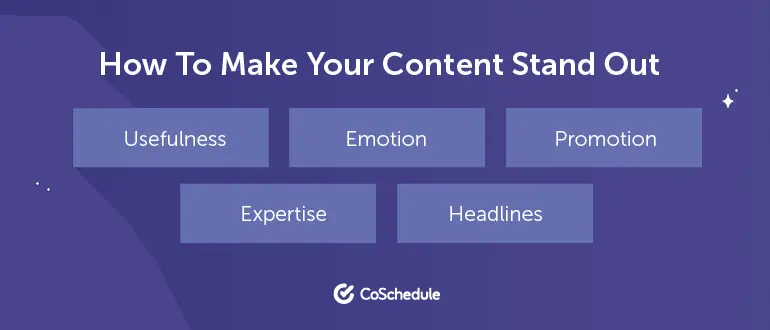 Make your content useful. You’re probably thinking, I already do this.
Chances are that you don’t as much as you could.
Just because your content is educational, doesn’t mean it’s useful to your consumers. A few tips to make your content useful is to:
Make your content useful. You’re probably thinking, I already do this.
Chances are that you don’t as much as you could.
Just because your content is educational, doesn’t mean it’s useful to your consumers. A few tips to make your content useful is to:
- Add helpful templates
- Make it actionable
- Use it as a discussion platform for your consumers to engage
 If you aren’t promoting the content that you are writing, people aren’t going to see it. In fact, you can use this little method to boost your social media traffic to your content by 192%.
If you aren’t promoting the content that you are writing, people aren’t going to see it. In fact, you can use this little method to boost your social media traffic to your content by 192%.
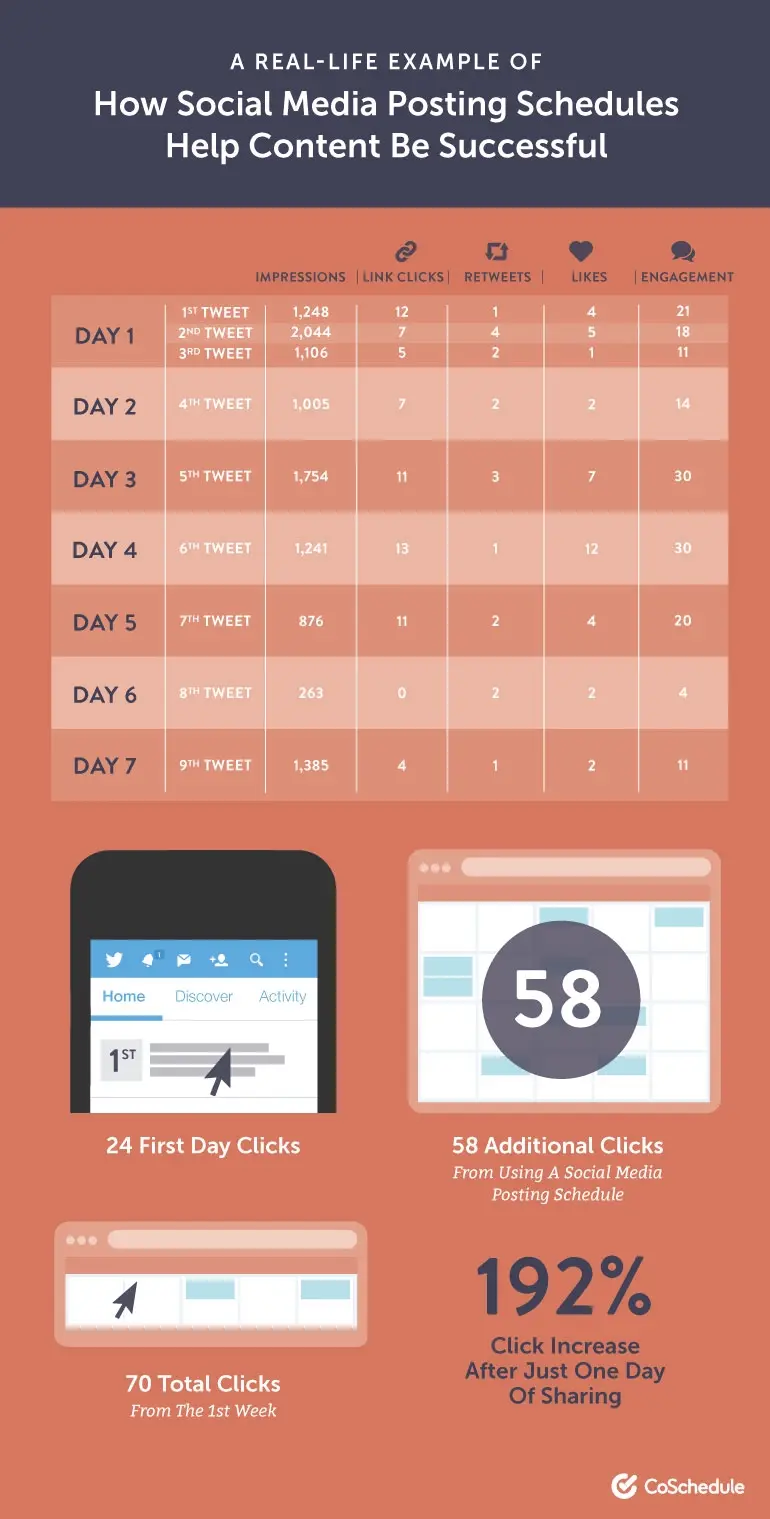 Be the expert. Before you write content for your next campaign, I challenge you to do double the research that you normally do. Make it your goal to have the most educational article that you possibly can. If you do this, people will be more likely to use your content as a reference than the other leading competitors.
Them using you as a reference is a great way to get your foot in the door. ?
Make Your Headlines Stand Out. “5x as many people read the headline as read the body copy.” - David Ogilvy
Be the expert. Before you write content for your next campaign, I challenge you to do double the research that you normally do. Make it your goal to have the most educational article that you possibly can. If you do this, people will be more likely to use your content as a reference than the other leading competitors.
Them using you as a reference is a great way to get your foot in the door. ?
Make Your Headlines Stand Out. “5x as many people read the headline as read the body copy.” - David Ogilvy
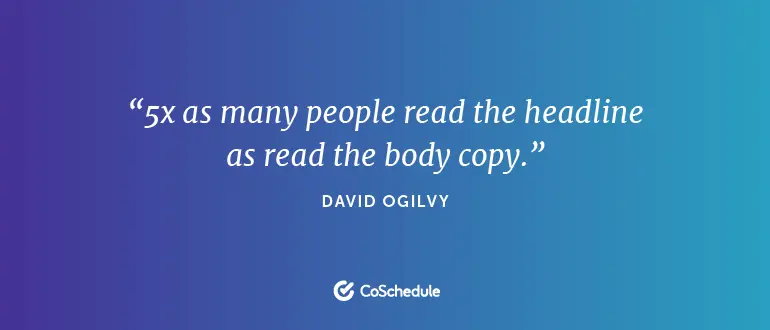 Your headline is just as important as the copy underneath it. Make sure you are spending the time on your headline that it deserves. Make it catchy, enticing, and creative.
If you need some help judging whether your headline will do the trick, try using the Headline Analyzer Studio.
Your headline is just as important as the copy underneath it. Make sure you are spending the time on your headline that it deserves. Make it catchy, enticing, and creative.
If you need some help judging whether your headline will do the trick, try using the Headline Analyzer Studio.

Creative Content Strategy
A company that slays the content marketing game is Sephora. Instead of a traditional blog, they created a content hub for their customers to share beauty tips and product knowledge. It’s genius. Not only is it a useful resource for customers to go, but it drives them to their ultimate goal of selling product.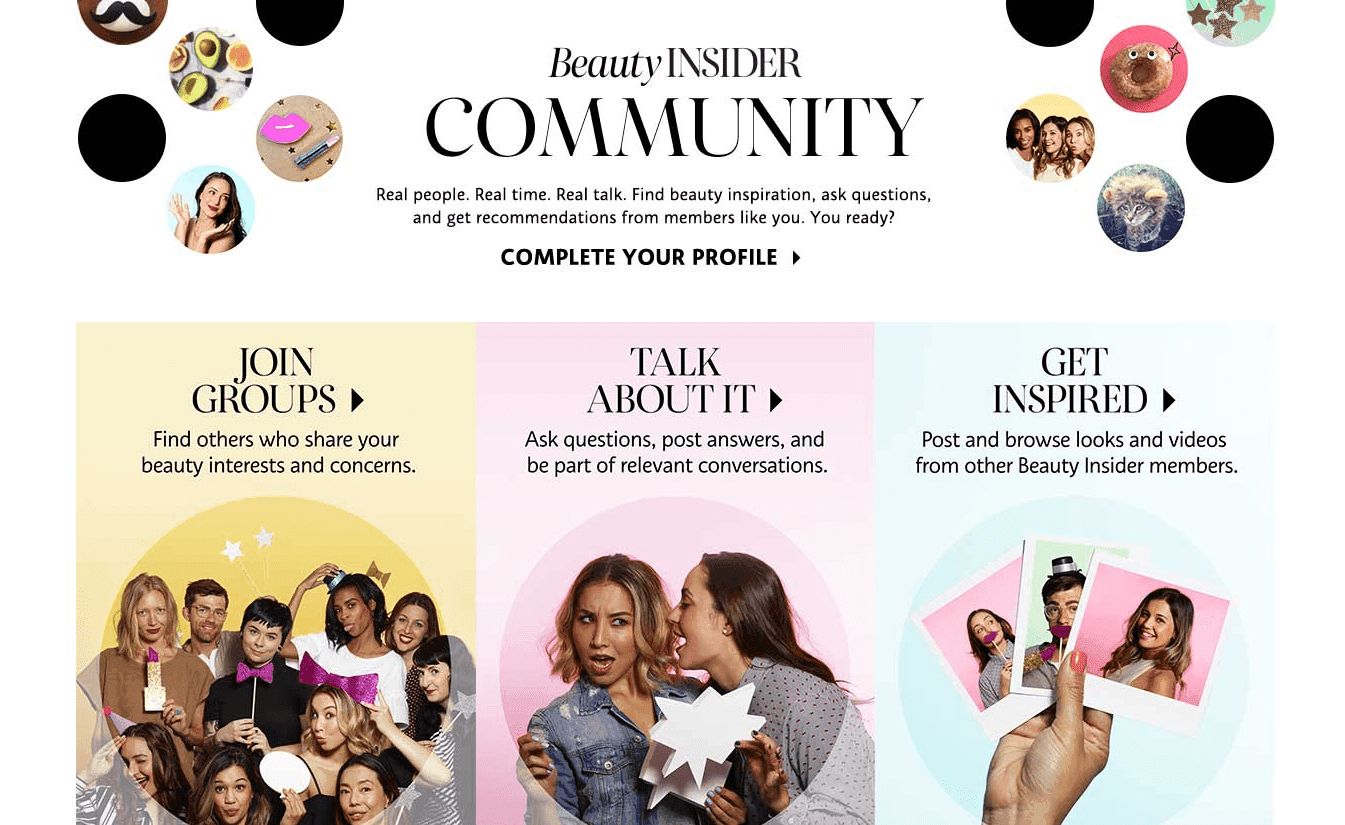
How can you creatively implement #contentmarketing in your strategy?
Click To TweetSocial Media
To succeed in a creative social media strategy, you either have to put money behind it or stand out from the crowd. It’s no easy task to be different than the rest, but it is possible. These are some of the most common qualities that successful, creative social media strategies had (and all can been done without spending a dime). Multichannel You may think that this strategy is obvious, but you’d be surprised how many companies decide to focus on only one channel for their social media. Just because you have the most followers on one channel versus another, it doesn't mean you should be stagnant on your other channels. The scary thing about social media is that we have no idea which channels will stay around and which will disappear, like Google+. Sharing your content on many social media channels gets you in front of more customers and prospects. Engage After you’ve launched your social media campaign you’re done, right? Wrong. The most successful social media campaigns make sure to engage with their audience after their campaigns have launched. Engaging with your followers makes people know, like, and trust you. Using this tactic will be sure your campaign takes off! ? Hashtags Social Media Marketers are all told to use hashtags, but do we really know why? Using hashtags is an easy way to get in front of a broader audience. Toms is the perfect example of a company that used a hashtag correctly. In 2015 they engaged 3.5 million people in one day using the hashtag #WithoutShoes.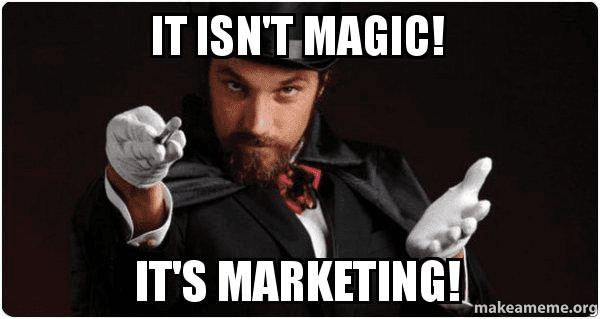 There are so many other tactics that you could add to your creative social media strategy, but make sure you are using tactics that make sense to reach your target audience. Make sure not to venture too far from brand standards when you have your creative cap on!
There are so many other tactics that you could add to your creative social media strategy, but make sure you are using tactics that make sense to reach your target audience. Make sure not to venture too far from brand standards when you have your creative cap on!
Creative Social Media Strategy
If you’re looking for a company that slays social media, follow Wendy’s. Their sassy replies and savage Tweets is how this company rose to the top with their social media.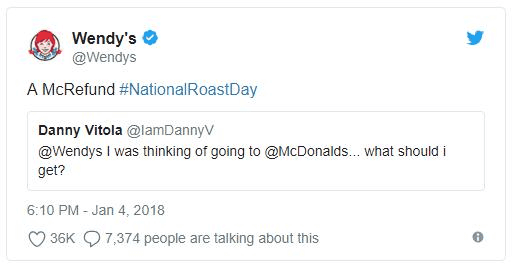 I’m not saying to go out and bash your competitors and I’m definitely not saying to try and be Wendy’s.
What I am saying is this: Social media is a tough game these days. Do your best to stand out from the crowd and if what you’re doing isn’t working, try something else!
If you’re looking for some more inspiring creative examples, read this.
I’m not saying to go out and bash your competitors and I’m definitely not saying to try and be Wendy’s.
What I am saying is this: Social media is a tough game these days. Do your best to stand out from the crowd and if what you’re doing isn’t working, try something else!
If you’re looking for some more inspiring creative examples, read this.
Brand
Your brand strategy is probably different than your typical creative strategy, but it doesn’t mean you can’t use elements from both. Brand strategy aims at positioning your company, while a creative strategy helps you reach your marketing goals. Make sense? Maybe the goal of your creative strategy is to create brand awareness. Either way, there are tons of ways you can creatively drive brand awareness.Creative Branding Strategy
One company that absolutely nailed their strategy is Coke. (I bet you know which campaign I’m talking about.)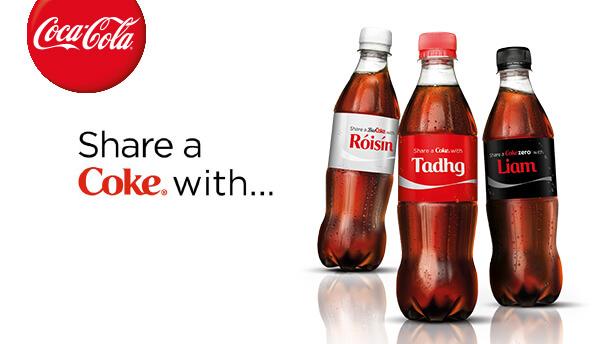 Source: https://www.coca-cola.ie/marketing/campaigns/iconic/share-a-coke-making-a-name-for-ourselves
Why is this creative brand strategy so successful?
Source: https://www.coca-cola.ie/marketing/campaigns/iconic/share-a-coke-making-a-name-for-ourselves
Why is this creative brand strategy so successful?
- The company connects with consumers on a personal level
- Entices you to share their product
- Uses celebrities in the commercials
- The campaign is long-lasting
Video
Video Marketing is going to the be hot topic of 2019. If you haven’t hopped on the video marketing train, it’s time to think about it! So, we all know that we should be using video marketing, but how?6 Video Marketing Tactics for Your Creative Strategy
1. How-to You should make a how-to video if you:- Your product or service needs to be explained
- Consumers don’t know exactly how to use your product
- Launched a new product that needs to be demonstrated
- Want to teach consumers something
- Can educate a consumer about your product or service
- Have an exciting new product or feature to share
- Want to highlight a product or service that the average consumer isn’t familiar with
- Want customers to expand their current purchase
- Ex. If you have a subscription
- Have the opportunity to interview a thought leader in your industry
- Want to announce some exciting news for your company
- Don’t have the knowledge that you want to share in your creative campaign, but someone else does
- Have the talent on your team and ability to make the video
- Want to share how your product works
- Can make a plain old video less boring
- Have a pool of loyal customers
- Can better highlight your product or service using customers
- Want to show the pain points of your target audience
- Want people to deem you credible
Creative Video Strategy
Slack rolled out a customer success video a few years ago to highlight their product, and it worked.PPC
You’re probably thinking, oh gosh. Pay Per Click strategies are so dry, and you’re not wrong. Just because they are short, concise, and bland, doesn’t mean there isn’t room to add some creativity.Creative Snickers PPC Strategy
By thinking out of the box, Snickers reached 50,000 people in just three days. Crazy right? They decided to go against the grain on this PPC campaign and target misspelled words.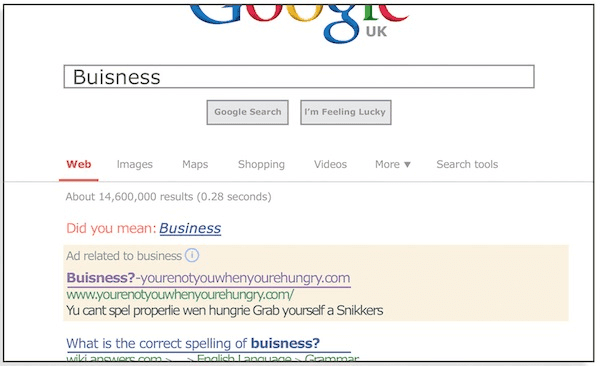 Just because something has been done a certain way for so long, doesn’t mean it should be! There’s room to be creative, even with a short and concise tactic.
Just because something has been done a certain way for so long, doesn’t mean it should be! There’s room to be creative, even with a short and concise tactic.
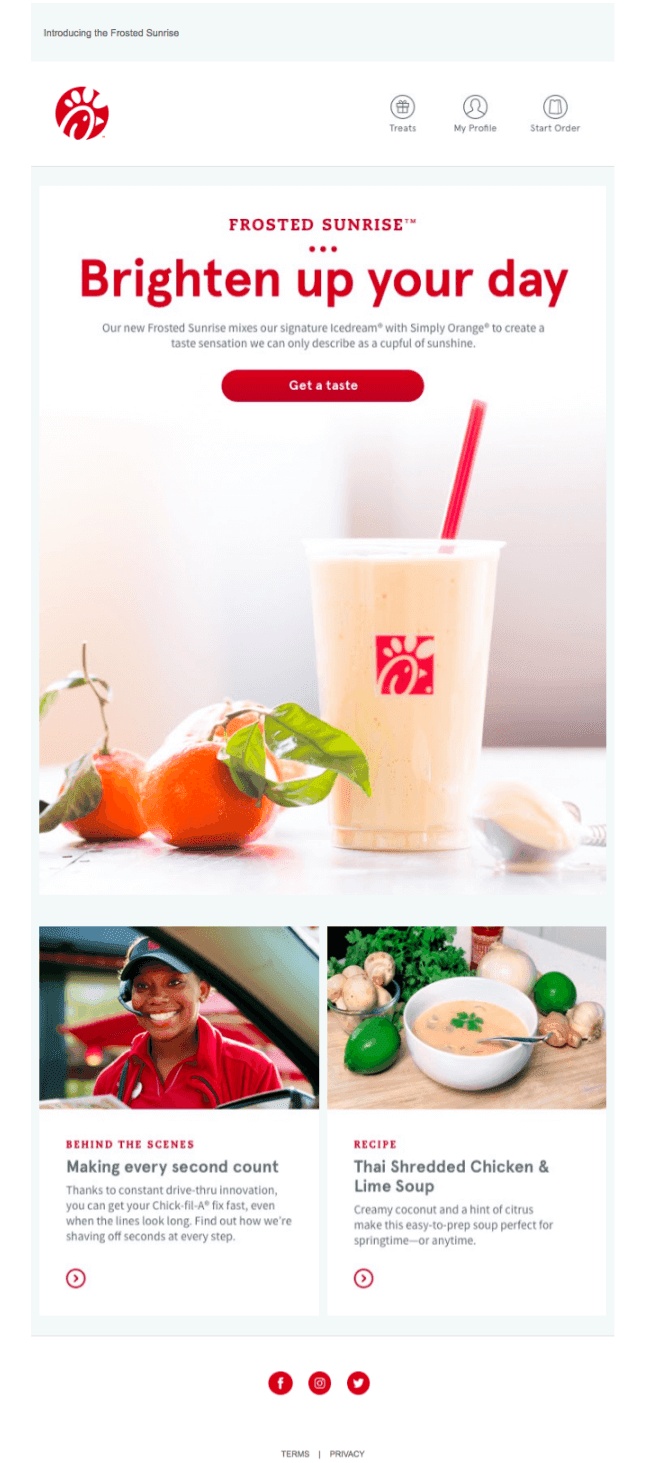 Source: https://www.sendinblue.com/blog/email-call-to-action-best-practices/
Design. While you’ll always want to stay on brand with your design, it’s time to start think about using a new template or color palette. If people can’t tell the difference between your emails, something is wrong.
Subject line. In a subject line, there is no room for boring copy. This is the one thing that makes people open your emails and maybe actually read them. Add humor, a sense of urgency, or something to make them open your email!
Personalization. With the number of emails that people receive every day, it’s time to think about making yours stand out from the rest. This can be as simple as adding their name, to sending a birthday email, to making the copy of your email relate directly to them.
Free stuff. We all love free stuff, don’t we? Whether it’s adding a free trial CTA or adding the word free in your subject line, it’s sure to spark people’s interest. Now just make sure that you can actually offer something free if you’re advertising it?
Source: https://www.sendinblue.com/blog/email-call-to-action-best-practices/
Design. While you’ll always want to stay on brand with your design, it’s time to start think about using a new template or color palette. If people can’t tell the difference between your emails, something is wrong.
Subject line. In a subject line, there is no room for boring copy. This is the one thing that makes people open your emails and maybe actually read them. Add humor, a sense of urgency, or something to make them open your email!
Personalization. With the number of emails that people receive every day, it’s time to think about making yours stand out from the rest. This can be as simple as adding their name, to sending a birthday email, to making the copy of your email relate directly to them.
Free stuff. We all love free stuff, don’t we? Whether it’s adding a free trial CTA or adding the word free in your subject line, it’s sure to spark people’s interest. Now just make sure that you can actually offer something free if you’re advertising it?
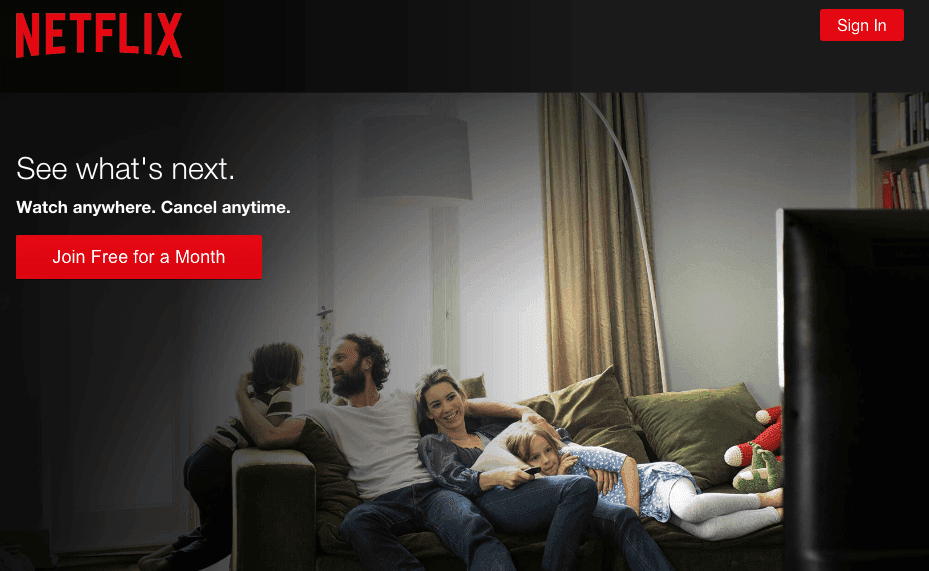
Creative Email Strategy
A company that relies heavily on email marketing is Airbnb. They rely so heavily on it because they found a creative strategy that works for them.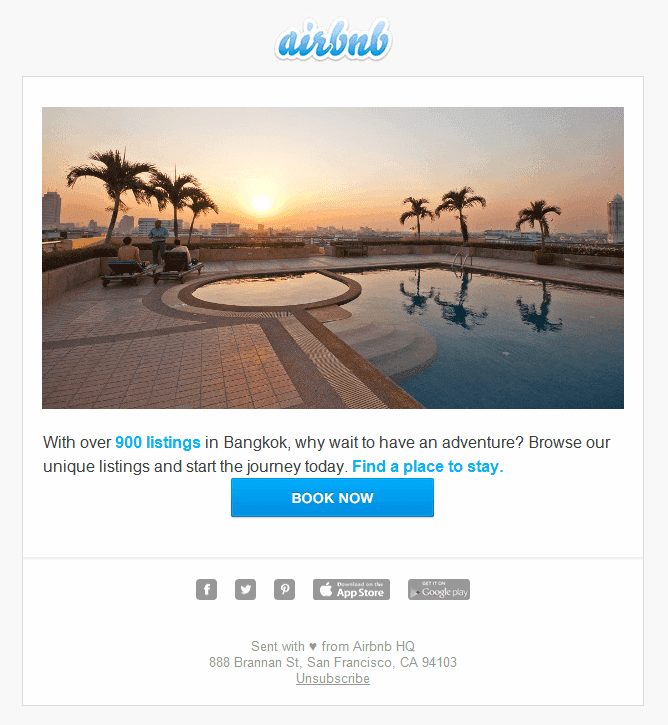 Airbnb keeps their emails very simple, yet effective. They’ve found that if they make people fantasize about a possible trip through email, it actually works. Sometimes simplicity is best!
While you probably aren’t in the same industry as they are, it’s important that you focus on what works for your target audience and think about switching up your strategy.
Hopefully, you’ve got what you need to go and rock your creative strategy. Put your creative cap on, download these templates, and get to work!
If you need help organizing and saving time with your creative strategy workflow, schedule a demo with a CoSchedule expert.
Airbnb keeps their emails very simple, yet effective. They’ve found that if they make people fantasize about a possible trip through email, it actually works. Sometimes simplicity is best!
While you probably aren’t in the same industry as they are, it’s important that you focus on what works for your target audience and think about switching up your strategy.
Hopefully, you’ve got what you need to go and rock your creative strategy. Put your creative cap on, download these templates, and get to work!
If you need help organizing and saving time with your creative strategy workflow, schedule a demo with a CoSchedule expert.
